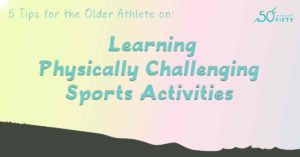What do you want the answer to this question to be? I think a good place to start is by asking ourselves if we are looking for answers so that we can make a plan orexcuses so that we won't feel Continue Reading
5 Tips for the Older Athlete on Learning Physically Challenging Sports Activities
Am I too old to learn something physically challenging? Learning new skills and activities can feel overwhelming for an older adult. I know that beginning horseback riding lessons about 9 months ago Continue Reading
My Interview on Super Human Radio About Running Barefoot
Who wouldn't want to be interviewed on a show with Super Human in the name? But really, people give me too much credit for running barefoot. It may take some hutzpah to go against social norms, but Continue Reading
What Kind of Shape Will You End Up With While Getting In Shape ?
What is your perfect shape? Picture yourself in perfect shape. What do you look like? Wait. Think carefully. Is it really you? This is a mistake that is made too often. We form an ideal in our head Continue Reading
How to Make Each Workout a Success with 3 Easy Steps
[Week 8 of 12 Weeks to a Healthy New Year] Three important things to keep in mind for an individual workout. Most people have a bad habit of coming away from their workouts telling themselves Continue Reading





